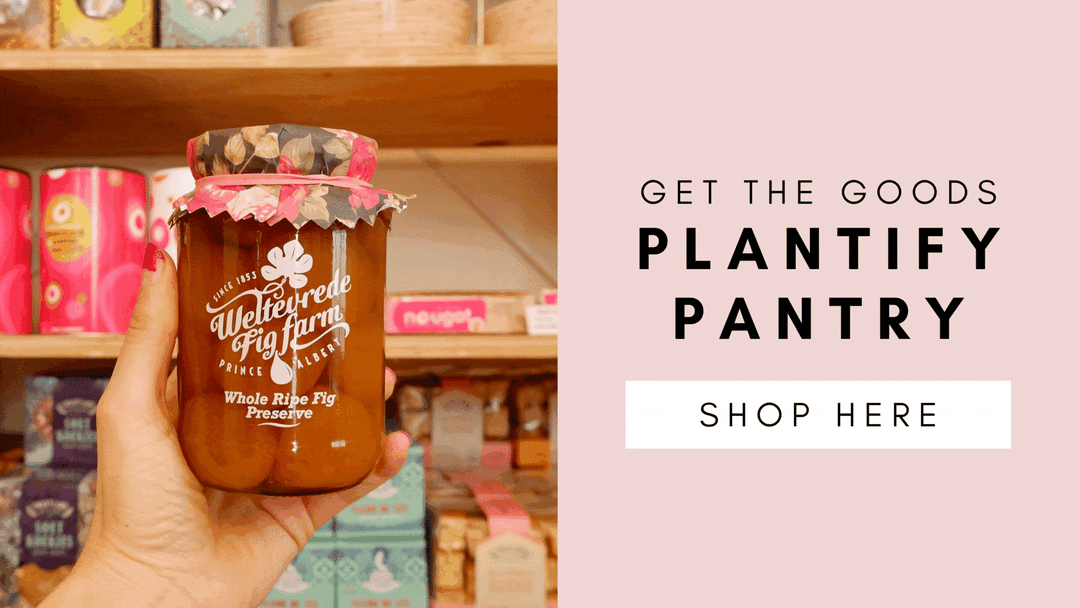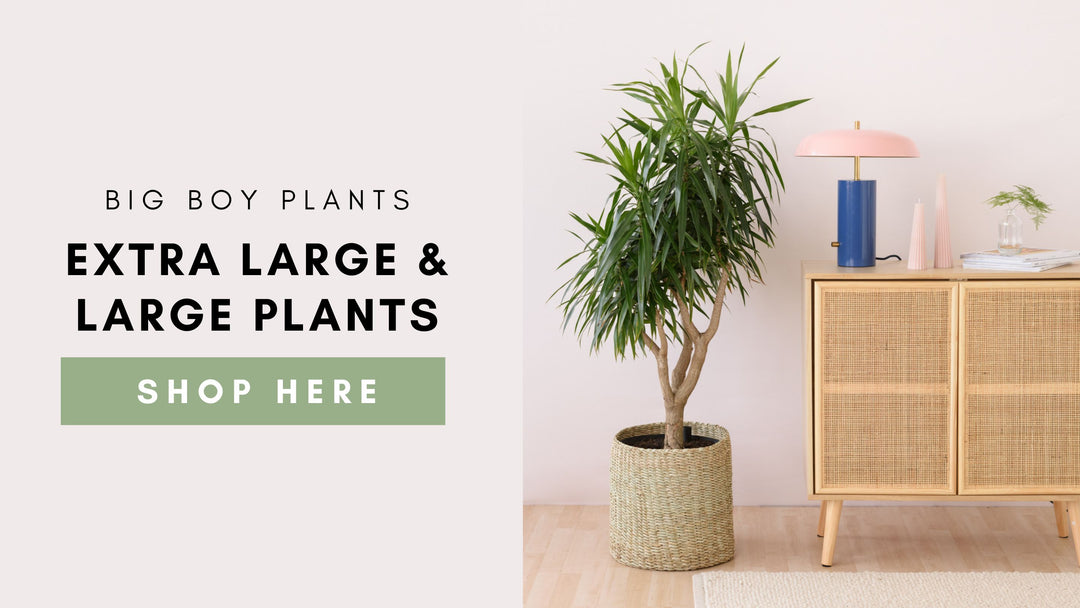Zebra Plant Care Instructions
Scientific Name: Aphelandra Squarrosa
Synonyms: Zebra Plant, Saffron Spike Zebra Plant
The Zebra Plant is a visually striking tropical houseplant native to the Atlantic Forest regions of southeastern Brazil, where it thrives in the humid understory of rainforests. In its natural habitat, it grows beneath the forest canopy, protected from direct sunlight while enjoying year-round warm temperatures and consistently moist conditions.
This remarkable plant commands attention with its dramatic golden flower spikes that can persist for up to 6 weeks. Even when not in bloom, it remains a standout specimen thanks to its glossy, deep green leaves adorned with bold white veining that mimics its namesake's stripes. These distinctive markings evolved to help the plant maximise light absorption in its shaded forest home. As a houseplant, Aphelandra squarrosa maintains its wild nature's particular preferences. It requires conditions similar to its rainforest habitat: bright but filtered light, high humidity, and steady warmth. Without these conditions, the plant may become leggy and shed its foliage. While this might make it seem demanding, the plant's stunning appearance makes it worth the extra care needed to recreate its natural environment.
As a houseplant, Aphelandra squarrosa maintains its wild nature's particular preferences. It requires conditions similar to its rainforest habitat: bright but filtered light, high humidity, and steady warmth. Without these conditions, the plant may become leggy and shed its foliage. While this might make it seem demanding, the plant's stunning appearance makes it worth the extra care needed to recreate its natural environment.
To showcase this exotic beauty, position it in a simple, colourful planter or something plain with a little texture that complements without competing with its dramatic foliage. It works beautifully as a sophisticated tabletop accent or grouped with solid green plants to create striking contrast in your indoor display. The Zebra Plant's bold pattern and architectural form make it an exceptional focal point in any interior landscape, bringing a touch of Brazilian rainforest magic to your home.
Please note: Aphelandra Squarrosa is not known to be toxic; however, keep it out of reach.

Zebra Plant Common Symptoms
-
Leaf Yellowing: When leaves turn yellow on your Zebra Plant, particularly the older ones, you're likely dealing with either a watering issue or nutrient deficiency. Start by assessing your plant's moisture levels; the soil should be consistently moist but never waterlogged or soggy. If you find overly wet conditions, let the top layer of soil dry out completely before watering again. This period of drying will help prevent root damage and give you a chance to adjust your watering schedule.
Poor drainage often compounds watering problems, so examine your planter carefully. If your pot lacks drainage holes, it's crucial to repot your Zebra Plant into a container with adequate drainage to prevent water from pooling at the roots. However, if you've ruled out watering and drainage issues but the yellowing persists, your plant may be suffering from a nitrogen deficiency. In this case, consider applying a balanced, organic liquid fertiliser during the growing season to restore proper nutrient levels. -
Leaf Drop: Sudden leaf drop in your Zebra Plant often signals environmental stress, particularly from temperature fluctuations or inadequate humidity. This tropical beauty is especially sensitive during winter months when indoor conditions can become harsh. To prevent leaf drop, keep your plant away from draughty windows, air conditioning vents, and heating where temperatures can swing dramatically.
If temperature isn't the culprit (aim to maintain a stead 18-24°C), focus on humidity levels. These rainforest natives require higher humidity than most homes provide. You have several options to increase moisture levels: relocate the plant to naturally humid spaces like a bright bathroom or kitchen, place a humidity tray filled with pebbles and water beneath the pot (ensuring the pot doesn't sit directly in water), or group it with other plants to create a more humid microclimate. Using a humidifier nearby can also help maintain the consistent moisture levels your Zebra Plant craves. Remember, any environmental changes should be made gradually to avoid further shocking the plant. Once you've established proper conditions, new leaf growth should resume and dropping should cease. -
Leggy growth: When your Zebra Plant develops leggy growth—characterised by elongated stems and increased spacing between leaves—it's sending a clear signal that it's not receiving enough light. This stretched appearance occurs as the plant attempts to "reach" toward available light sources, resulting in weak, spindly growth rather than the naturally compact, robust form these plants are known for.
If you notice this behaviour, it's time to reassess your plant's location. The key is to gradually transition your Zebra Plant to a brighter spot, as sudden changes can shock the system and cause additional stress. Choose a location with bright, indirect light, ideally near an east-facing window where the plant can receive filtered sunlight throughout the day. After relocating, you should notice growth becoming more compact and healthy, though existing leggy growth will remain. For the best results, you may want to consider pruning the elongated stems once the plant has adjusted to its new location, encouraging fuller, bushier growth.

-
Brown Leaf Tips: When your Zebra Plant's leaves develop crispy, brown edges, it's typically calling attention to humidity issues. As a tropical native, this plant requires consistent air moisture to maintain its lush, vibrant appearance.
To combat these symptoms, you'll need to boost the humidity around your plant. Consider moving it to spaces where the air is naturally higher in humidity, such as a well-lit bathroom or a kitchen. Another effective approach is creating a DIY microclimate—setting up a shallow tray filled with stones and water beneath your plant (keeping the pot elevated above the water level to prevent root rot) or clustering your Zebra plant among other leafy houseplants to create a small tropical oasis. For a more controlled solution, investing in a small humidifier and placing it near your plant can help maintain humidity and prevent crisp leaf edges. -
Wilting Despite Wet Soil: When your Zebra Plant shows signs of wilting even though the soil remains wet, you're likely dealing with root rot—a serious condition that requires immediate attention.
To save your plant, carefully remove it from its pot and inspect the root system. Healthy roots should be firm and white or light tan, while rotted roots will appear brown or black, feel mushy, and may have an unpleasant odour. Using clean, sharp scissors or pruning shears, trim away all compromised roots. Next, repot your plant in fresh, well-draining potting mix in a container with adequate drainage holes. During recovery, be particularly mindful of your watering routine—allow the top few centimetres of soil to dry between waterings to prevent the problem from recurring. With proper care, your Zebra Plant should begin producing new, healthy roots and resume normal growth. -
No Flowers: When the plant fails to produce its characteristic golden bracts, it's usually due to inadequate light conditions or improper temperature. The plant needs consistent warm temperatures and bright, indirect light to bloom successfully. Relocate to a brighter, warmer position, and be sure to feed to encourage a strong plant that will produce blooms.
- Pests: If your Zebra Plant becomes stressed due to environmental factors not being met, they can be susceptible to pest infestations leading to excessive yellowing fronds and leaf drop. Watch for mealybugs, aphids, and spider mites, which can quickly damage the foliage. Signs include discoloured leaves, webbing, or visible insects. Maintain optimal growing conditions and treat any infestations promptly with insecticidal sprays like Pyrol or neem oil.
Zebra Plant Care Instructions
- Origin: Native to the Atlantic Forest regions of southeastern Brazil, where it naturally grows as an understory plant in tropical rainforests.
- Height: Typically grows 30-90 cm tall indoors, with potential to reach up to 1.5 meters in optimal conditions.
- Light: Bright, indirect light is essential. Avoid direct sunlight, which can scorch leaves. Ideally position near an east-facing window for best growth. Will tolerate lower light but may become leggy and lose its vibrant leaf markings.
- Water: Keep soil consistently moist but not waterlogged. Water when the top 2-3 cm of soil feels dry to touch. Reduce watering in winter, but never allow soil to dry completely. Use room-temperature water to avoid shocking the root system.
- Humidity: Requires high humidity levels of 60-80%. Use a humidity tray, group with other plants, or employ a humidifier to maintain moisture levels. Misting leaves can help but isn't sufficient as a primary humidity source.
-
Temperature: Thrives in temperatures between 18-24°C during the day and no lower than 15°C at night. Protect from cold drafts and sudden temperature changes. Growth slows significantly below 15°C.
- Soil: Well-draining, rich soil is essential. Combine regular potting soil with orchid bark, palm peat, and perlite for good aeration and drainage.
- Fertiliser: Feed every 2-3 weeks during the growing season (spring and summer) with a balanced, organic liquid fertiliser diluted to half strength. Reduce to monthly feeding in autumn (this will assist with blooming in spring) and stop completely in winter.
- Pruning: Remove spent flower spikes at the base. Prune leggy growth in early spring to encourage bushier growth. Always use clean, sharp tools and cut just above a leaf node. Remove any yellowed or damaged leaves throughout the year to keep your plant looking happy and healthy.
- Repotting: Repot every 1 ½ to 2 years in spring when roots begin to fill the po or you notice no new growth. Choose a container only 3-5 cm larger than the previous one to prevent overwatering issues. Always use fresh potting mix when repotting, and be as gentle as you can when working with the roots to avoid stress.
- Propagation: Propagate through stem cuttings in spring or early summer. Take 10-15 cm cuttings with at least two leaf nodes, remove lower leaves, and plant in moist propagation mix. Maintain a temperature around 21°C and high humidity; this can be done by placing your plant in a clear plastic bag. Roots typically develop within 4-6 weeks.
If in stock, shop for the Zebra Plant here



